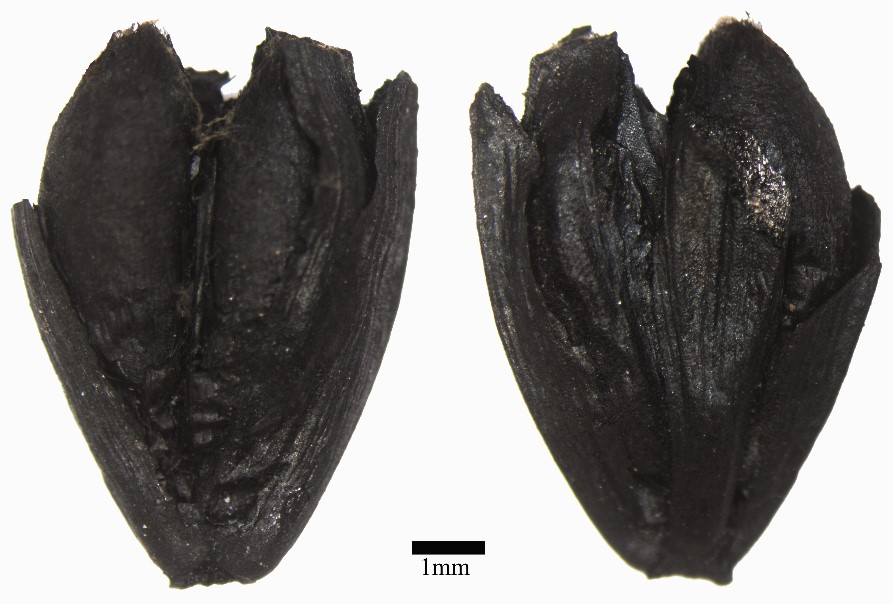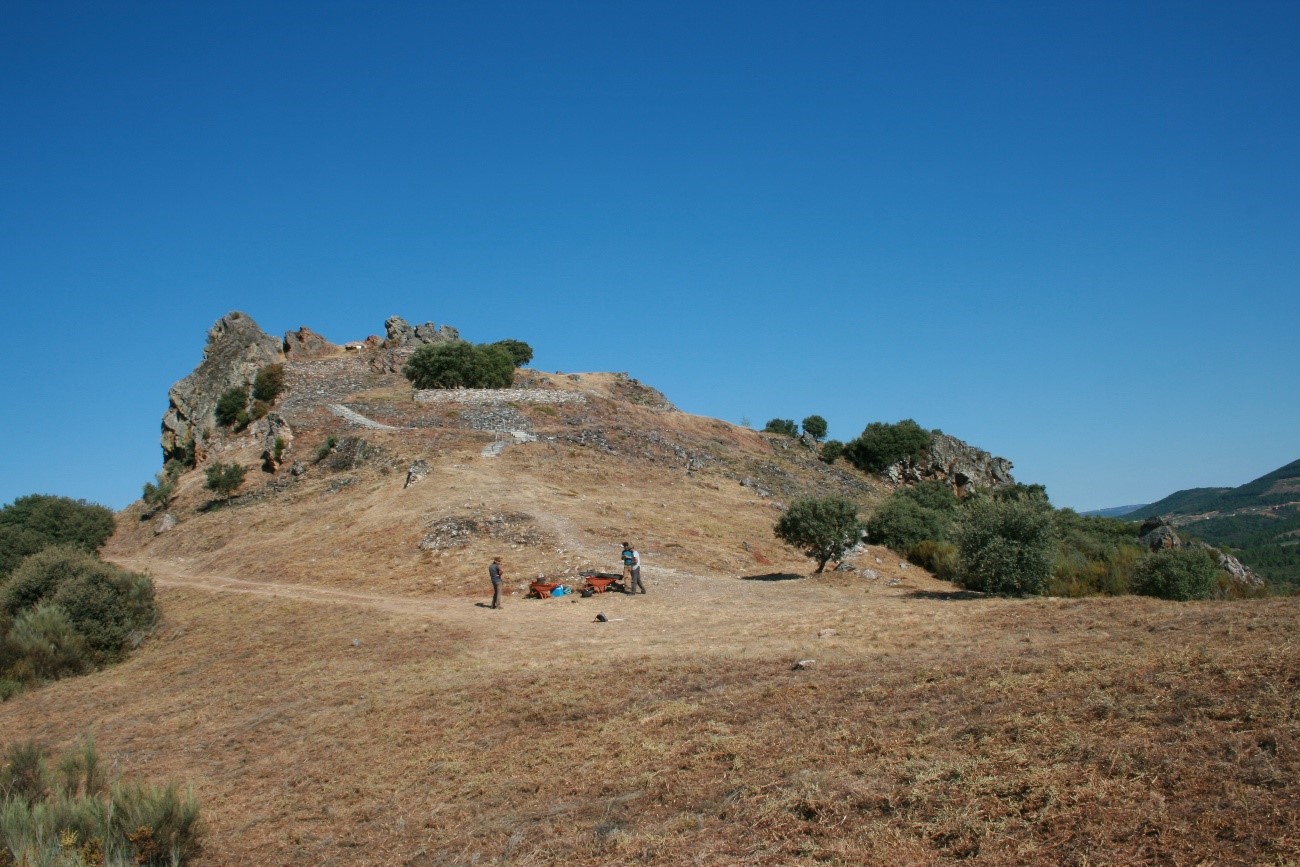
Spelt wheat in Iberia: from the East came a northern crop
The introduction of spelt in Iberia has been attributed to Germanic people and the Romans. However, we know now it was cultivated before that, at least since the 5th century BC, in the northernmost regions. How and from where this crop came is still largely unknown, but it is clear it became one of the most important staples in the last centuries before the turn of the Era in the hillforts of Northwest Iberia.
Charred grains of spelt from As Laias (Ourense, Spain)
Photo: João Pedro Tereso
Domestication
Spelt (Triticum aestivum L. subsp. spelta Thell.) is a hulled form of wheat, the same as emmer (Triticum turgidum subsp. dicoccum Schrank), one of the earliest domesticated plants in Southwest (SW) Asia. This means that grains are protected with thick and adhering glumes in the spikelet, which survive threshing, demanding further efforts to free the grain, unlike free-threshing wheat such as bread wheat and durum wheat.
The origin and early history of spelt is still a matter of discussion. A double origin is usually proposed:
1) this crop is the result of a hybridization between a domesticated wheat and a wild grass – Aegilops tauschii Coss, existing in Transcaucasia and SW Asia. Whether the parenting wheat was a hulled or free-threshing form of Triticum turgidum L. is a matter of debate, but it seems spelt was of no relevance in SW Asia in the earliest stages of agricultural development.
2) later, a free-threshing wheat, our common bread wheat (Triticum aestivum L.), possibly deriving from earliest spelt, was cultivated alongside emmer, a tetraploid hulled wheat, in Central and Eastern Europe. Their secondary hybridisation originated a new spelt wheat that was disseminated through most of Europe.
A staple in the hillforts of northern Iberia during the Iron Age
Spelt was already cultivated in Central Europe during the Bronze Age (2nd millennium BC) and further expanded its range in the Iron Age. Accordingly, the earliest remains of spelt recovered in Iberia date to the 6th-5th centuries BC. It is not clear whether these came from Central Europe or SW Asia, but the latter has been suggested based on genetic data of current landraces.
Charred spikelet with grains from As Laias (Ourense, Spain)
Photo: João Pedro Tereso
Independently of its origin, spelt became a very relevant crop in northern Iberia. Abundant data from the Northwest demonstrate it was a crucial element in subsistence strategies by the Late Iron Age and until the turn of the Era. It is the dominant crop in several archaeological sites such as As Laias (Ourense, Spain), Crastoeiro (Mondim de Basto, Portugal) and Crasto de Palheiros (Murça, Portugal), where it was recovered alongside free-threshing wheat, barley (Hordeum vulgare L.), millets (Panicum miliaceum L. and Setaria italica (L.) P.Beauv.), oat (Avena L.), faba beans (Vicia faba L.), and even acorns (Quercus L.).
Archaeobotanical and archaeological data suggest that spelt was usually stored shortly after the harvest, with the grains still within the husks. This means that further processing was needed before consumption. This choice is likely the result of a combination of two relevant factors: (1) keeping the grains within the spikelets allows better preservation in long-term storage, since the husks protect grains against humidity and pests; (2) dehusking hulled wheat is very labour-demanding and time-consuming, making it impossible for communities to fulfil such tasks in bulk immediately after the harvest. As such, freeing grain from the glumes would be a day-to-day activity in each household, probably in accordance with each family’s needs. Taking place in domestic areas, this tended to produce a significant amount of garbage, some of which was used as fuel in the hearths and ovens, allowing for their carbonization and preservation until today.
Crasto de Palheiros (Murça, Portugal)
Photo: Maria de Jesus Sanches
Interestingly, spelt became a relevant crop in the North at a time when time-consuming hulled wheat such as emmer and einkorn (Triticum monococcum L.) were largely being abandoned elsewhere in Iberia. The reasons for spelt’s relevance in these northern areas are likely related to their climatic and geomorphologic conditions. If we take the Northwest as an example, it is a mountainous area, among the most humid regions in Europe. Several agronomic studies have demonstrated that spelt provides higher yields than free-threshing wheat in such conditions, making it the logical choice to assure food security, however labour-demanding it was. At the same time, the rise of spelt is largely coincident with social and economic changes in the region. For instance, by this time, hillforts seem to increase in number, size and complexity. It is possible, thus, that spelt was a cultural choice and part of larger trends in several scopes.
From Roman times onwards, spelt cultivation was largely abandoned and soon it became a rare crop. It is largely absent from Medieval written sources but, in the 19th century, the Ceres Hispanica herbarium by botanists Mariano Lagasca and Simón de Rojas Clemente recorded 7 varieties of spelt in Spain. By the mid and late 20th century, some were still cultivated in Asturias, although with little economic relevance.
Modern spikes of spelt
Photo: João Pedro Tereso
Today, there is a revival of spelt, even if sometimes based on wrong historical and biological assumptions. Spelt is frequently considered a wildish or non-hybridised crop of Egyptian origin. Thus, it became a highly regarded crop in a time when consumers search for healthier and traditional food products. These trends helped turning spelt into an appreciated and valuable crop, suitable for high-value markets prone to pay for the higher costs of spelt’s differentiated harvesting and processing procedures. Still, it remains an endangered crop, and it is crucial to preserve its genetic diversity in a rapidly changing world.
João Pedro Tereso is an Archaeologist, with a Ph.D. in Biology and specialised in Archaeobotany. He is a researcher at CIBIO-BIOPOLIS, where he coordinates the Environmental Archaeology group. He is also a member of CEIS20 and an invited teacher at the University of Coimbra. His investigation is focused on environmental changes in the Holocene and the development of agriculture in a diachronic perspective from pre-historic times until the modern period. He is particularly interested in the way agricultural strategies are related to environmental and social trends and, more broadly, how human communities exploited plant resources through time.





0 Comments